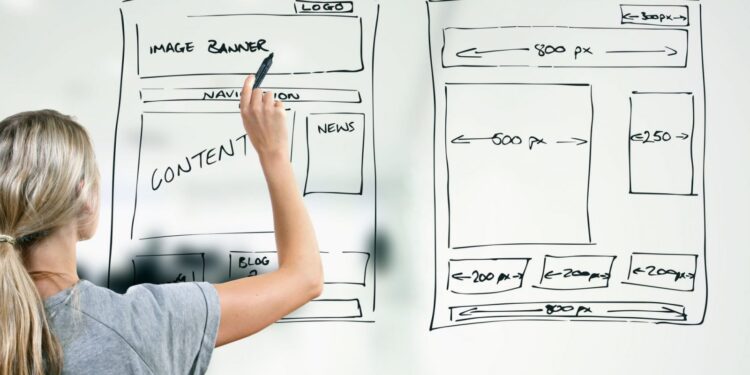What is UX design
UX is the experience with the interface of an application or website. The user experience depends on the components: graphic design, site architecture, the responsiveness of the interface, and understandable text. In a broader sense, it’s about a user’s entire experience when interacting with an app or site.
[ads]
The clearer and more accessible the interface is, the easier it is for the user to get results by taking targeted action. Obligatory duties in UX design are the development of prototypes of behavior, the study of user habits, and systematic testing. Marketing Engineer is the other side of the UX designer. The specialist studies analytics drafts terms of reference for copywriters and thinks through the connections between interface elements and their visual arrangement. The result is a prototype, the effectiveness of which depends directly on the quality of the work done.

Who is Suitable for the Profession
Often during the work, you may realize that you do not like your chosen profession. So even at the stage of choosing a specialization, it is worth deciding whether the position of UX designer suits you. To do this, you can ask yourself the following questions.
How to understand whether the position of UX designer suits you:
Do I understand people? If you feel comfortable around people and find out what they are interested in and what they want, then the position of UX designer will suit you.
You will have to research the target audience, create a Persona, and analyze product feedback to understand users’ needs and priorities.
Do I know how to work with a team? If you’re willing to communicate with many people and delve into their activities, then working on projects will come easily to you.
The UX designer does not manage the project, but he still communicates with the whole team: product manager, developers, UI designer, UX researcher, UX copywriter, analyst, and marketer. And this means you need to understand, at least superficially, the specifics of their work.
Do I pay attention to details? If you pay attention to individual and small details in real life, UX design needs you.
[ads]
When designing a product, it’s important to think about every little detail – but we’re not talking about visuals here. We’re talking about functionality. The user experience is made up of many different elements, and they all need to be considered. So attention to detail will make a big difference.
Am I okay with criticism? If you accept edits calmly and can also calmly argue your actions and disagreements, then you will work well with the team.
At each stage of development, the UX designer shows the intermediate results of the team. But this is where he may encounter criticism. So showing respect to colleagues and stress tolerance are essential.
Am I ready for constant and rapid change? If you react immediately to all kinds of changes and are constantly ready to evolve, this is the direction for you.
The work of a UX designer never ends, and you have to be ready for constant change. Today your audience wants a convenient online store with a virtual fitting, and tomorrow it will be back in fashion to go to the offline store with your girlfriends.
In this case, it’s up to you to ensure people continue using the service. For example, come up with home delivery of selected items with a real fitting.
How to Start and What to Do First
The first and foremost skill you need is to master the graphics editor. The most in-demand toolset is Adobe Photoshop, Sketch, Principle, Adobe Illustrator, and After Effects. You can start by trying to redraw screenshots of any mobile app or website. But not just copy (although you need to be able to do that, too), but notice some inconvenience and suggest a solution to improve it.
It is also important to understand color theory, typography, composition, and site ergonomics (principles of interface usability), as well as the basics of marketing, business analysis, and psychology. For more effective communication with developers, layout skills (HTML/CSS) and basic knowledge of JavaScript and frameworks will be helpful.
You can start studying UX by familiarizing yourself with the methodology by reading books by Nielsen Norman, Alan Cooper, Jeff Raskin, Steve Krug, and Alistair Cobern. A more applied literature is The User Experience Team of One: A Research and Design Survival Guide by Leah Buley.
You can master everything mentioned above simply by starting online courses. With UX design online courses, you can master UX without leaving your home. The amazing bonus of online courses is practicing the skill you’ve learned. In most cases, there will be practical lessons where you will create your first UX design. These first steps will be guided by experts who will help you in every step. They will acquaint you with every detail and help you to create the best UX design you can.
There are plenty of career opportunities for you that will be available after completing UX design courses. Here are some of the possible career paths for a UX designer:
[ads]
- To improve as a designer, simply increase your rate when you gain enough experience and a portfolio of your completed projects (if you are a freelancer or work in an agency);
- Master related areas, developing as a product designer, VR designer, VFX designer, and Game designer;
- Grow up to the position of Art Director (Head of Design);
- Become a Product Manager if you want to switch from design to product management in general;
- Become a Project Manager if you are interested in coordinating people;
- Become a Typesetter if you are more interested in the technical aspect;
- Master programming and become a UI developer;
- Try yourself at marketing or business analysis.
Don’t hesitate, start learning UX design now!


